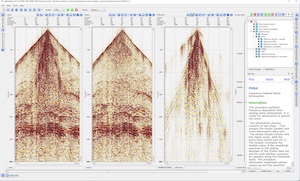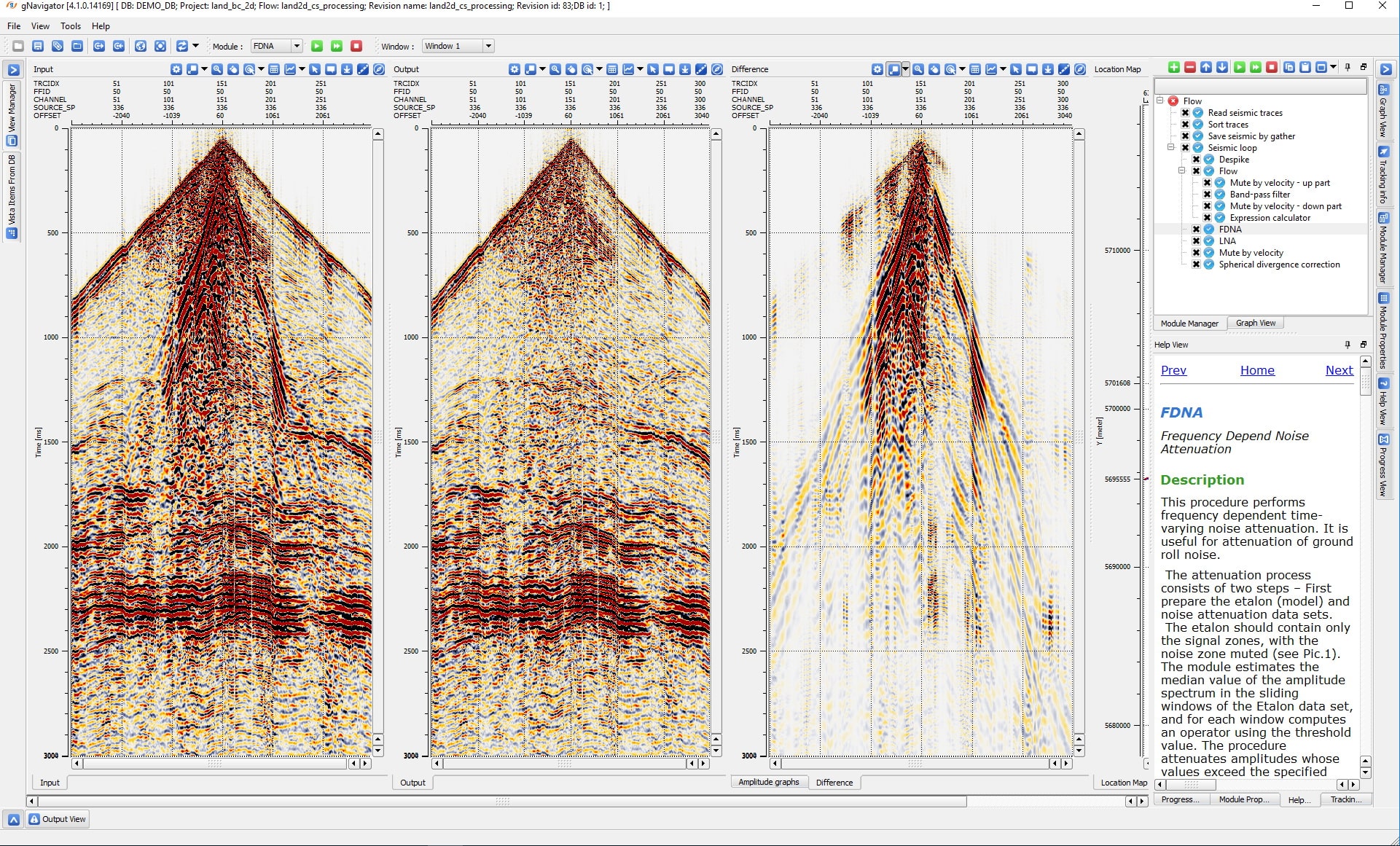Noise attenuation software
Noise attenuation software

Signal processing

Signal processing
g-Platform™ incudes a complete range of noise attenuation and signal enhancement tools:
- Spike / spurious amplitude removal
- FK filtering
- Advanced 2D and 3D linear noise removal modules: FDNA, LNA, Radial transform, Radon
- High resolution radon transform filtering
- FX and FXY random noise removal
- Cadzow rank reduction noise removal
- Spectral Balance and Q compensation
- Surface consistent amplitude correction
- Fully interactive testing inside the seismic loop